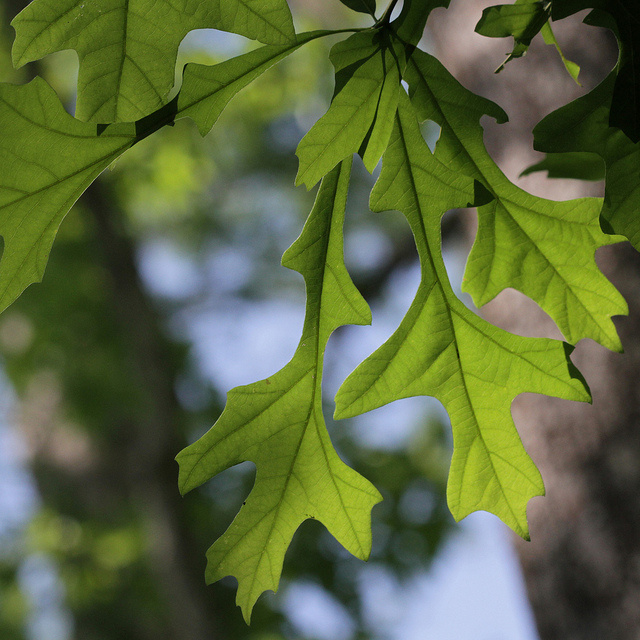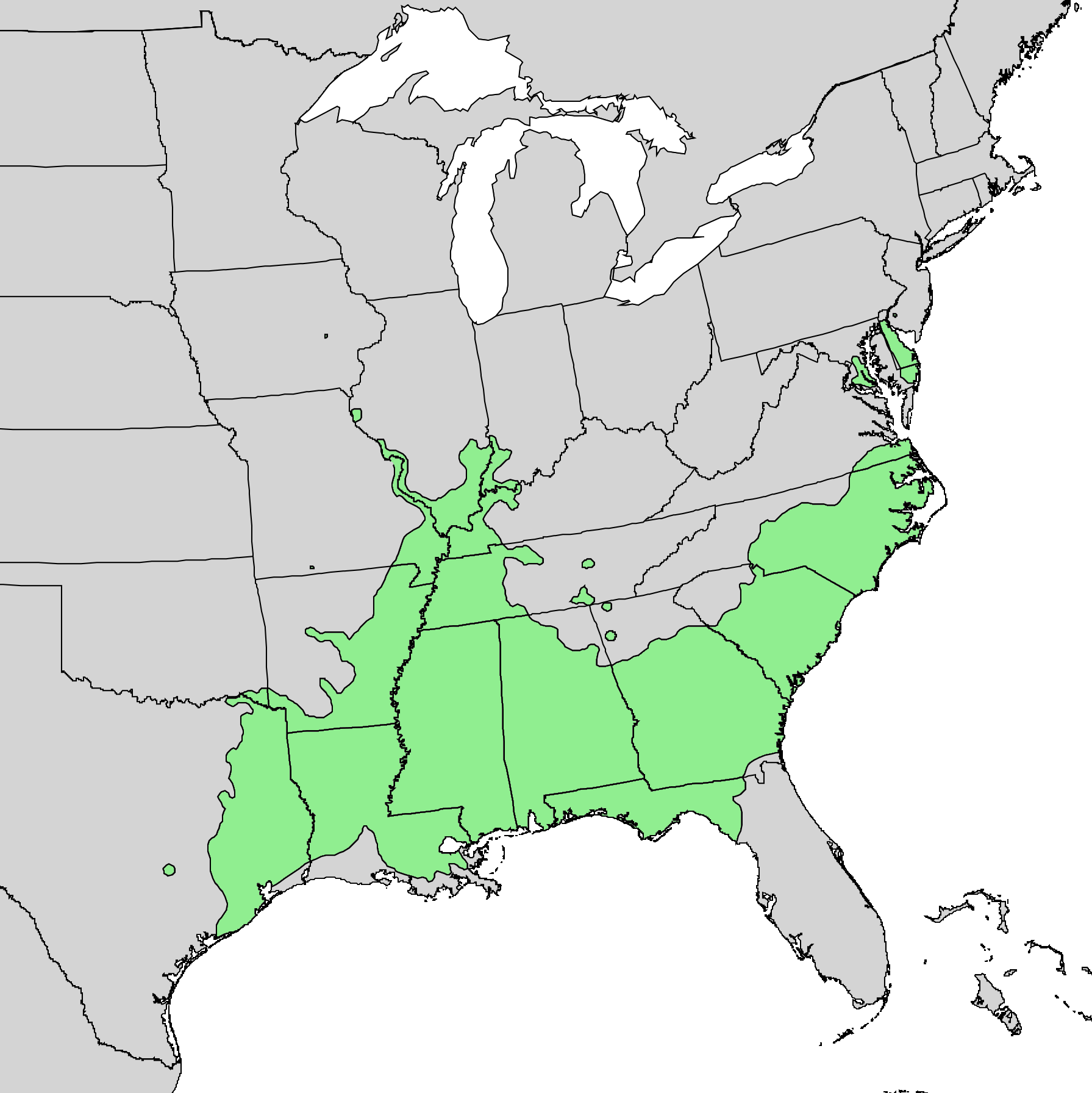Overcup Oak
Quercus lyrata Walter
Description
Overcup pak is a deciduous tree in the beech family (Fagaceae)¹. Also known as a swamp post oak, swamp white oak, and water white oak¹, a mature Q. lyrata can grow to be about 60-90 feet in height, with a spread of about 30 feet in width, and can live to be almost 400 years old². The bark can vary in color from a reddish hue to gray-brown. The simple, alternate leaves are alternate, 4 to 8 inches long, dark green above and almost white and fuzzy below, with five to nine deep lobes per leaf4. The flowers are monoecious and wind-pollinated4, with yellow male catkins and females with short red spikes. Wind-pollinated, female flowers develop into round acorns up to one inch in diameter with the scaly cup almost completely covers the nut, giving the overcup oak its common name 4. The acorns are distributed by floating to new areas during floods6.

Flat, scaly bark of overcup oak¹

Leaf of overcup oak. W. Stewart, Maryland Biodiversity Project 7

Acorn with cap nearly covering the entire nut. J. Schroeder 9
Distribution
This tree occurs naturally in wetter areas of Delaware and Maryland, through the southeastern United States including most of Georgia and the panhandle of Florida and west into eastern Texas. Quercus lyrata can also be found geographically hugging the Mississippi River from southern Illinois to the Gulf of Mexico². Preferring wetland habitats and water-logged environs, overcup oak is especially prevalent in swampy lowlands and floodplain forests 4, as this often-flooded habitat is one of the ways in which this plant reproduces and spreads. The particularly large “cup” to its acorn is made of cork, which is light enough that it helps keeping the acorn afloat. This seed dispersal method, paired with longer dormant periods than most other oaks, allows for further distribution downstream before germination 6. Quercus lyrata is relatively rare in Maryland, often found in coastal plain areas through counties found in the coastal plain. In particular, specimens can be found at the Adkins Arboretum in Caroline County, part of Tuckahoe State Park7.

Natural distribution of overlap oak 6
Wildlife Importance
As with most oaks, squirrels, birds, and other small animals will utilize the tree as a habitat, and their acorns are a popular food source for squirrels, as well as for wild turkeys, hogs and deer³. Oaks support a wide variety of caterpillars of moths and butterflies¹.
Economic Importance
Generally used as a shade tree in flood-prone areas, the lumber of this tree tends to be of a medium to poor quality, and is often avoided for use in construction, for other species of white make better lumber². The leaves and bark are quite astringent, and any galls found on the plant even more astringent, which has been used to treat some maladies and symptoms such as diarrhea or bleeding5.
Threats
Most insect and disease threats aren’t unique to overcup oak, but it is susceptible to most threats experienced by other oaks, including oak leaf blister, powdery mildew, scale, oak skeletonizer pests, oak lace bugs, and nut weevils 4. Quercus lyrata is resistant to oak wilt, and mildly resistant to deer browsing¹. Wood borers are a particular nuisance, including the carpenter worm, red oak borer and white oak borer. Overcup oak is especially sensitive to fire damage².
Interesting Facts
- Overcup oak gets its species epithet of lyrata because its deeply lobed leaves were thought to resemble a lyre 6.
- The tannins extracted from oak galls have been used as a dye5.
- The current Maryland State Champion Overcup Oak, labelled BT-3064, is located in Clifton Park in Baltimore City and measures 80 feet high with a 102-foot spread, with a trunk circumference of 180 inches 8.
References
- North Carolina State Extension: Overcup oak
- USDA Forest Service Silvics, Vol. 2, Hardwoods: Quercus lyrata
- Arbor Day Foundation: Overcup oak
- Missouri Botanical Garden: Quercus lyrata
- Plants for a Future: Quercus lyrata
- In the Defense of Plants: The overcup oak
- Maryland Biodiversity Project: Overcup oak
- Maryland Big Trees
- Missouri Department of Conservation: Overcup oak
Contributed by J. Obermaier and M. Subleski
